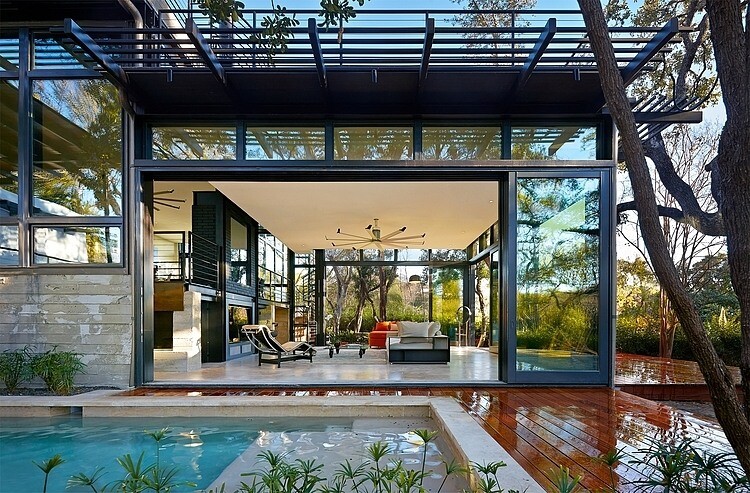Understanding the different window types is crucial for any home improvement project. Awning windows have gained popularity among homeowners, but what exactly sets them apart? In this article, we’ll dive into the details of awning windows, explore their key benefits, and discuss why they could be the perfect addition to your home. Whether you’re a contractor, architect, or homeowner planning a renovation, knowing about these windows will help you make an informed choice. Let’s get started!
What are Awning Windows?
An awning window is a type of window that is hinged at the top, allowing it to open outward from the bottom. This window design makes it unique compared to other window styles, like casement or double-hung windows, which typically open to the side or vertically. The awning window gets its name from the way it operates, mimicking the function of an awning—providing protection from the elements, especially rain.
Typically, these windows are used in places where airflow is important but you still want to keep the weather outside. They can be installed higher on walls, such as in bathrooms or kitchens, providing privacy while allowing fresh air to circulate. Their design also makes them ideal for rainy climates since the window opens outward at an angle, preventing rain from entering when it’s open.
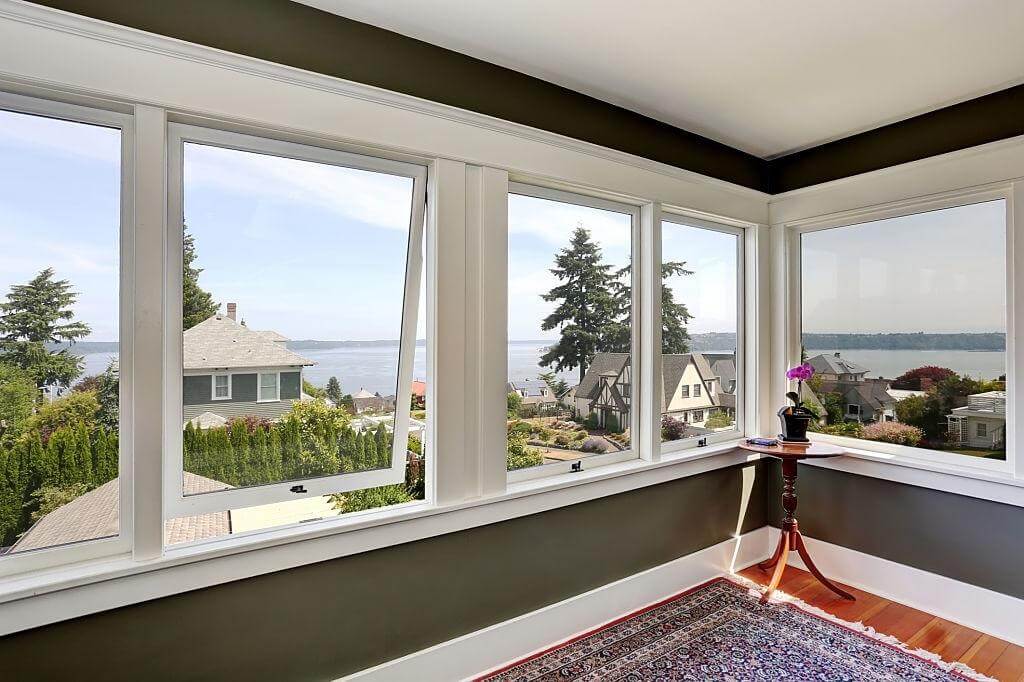
How Does an Awning Window Work?
An awning window operates by hinging at the top, allowing the window to swing outward from the bottom. This top-hinge design means the window opens at an angle, much like the way an awning extends outward to provide shade or shelter.
Here’s how it works in practice:
- Opening Mechanism: When you turn the handle or use a crank, the awning window pushes outward from the bottom, creating a small gap. This allows air to flow into the room, promoting ventilation without fully opening the window.
- Weather Protection: Due to its outward swing, the design helps protect the interior from rain. When the window is open, the angled position of the sash acts like a shield, keeping rainwater from entering while still allowing fresh air to circulate.
- Security and Privacy: Because the window only opens slightly, it is more secure than other windows that open wide. It’s perfect for spaces where you need ventilation but want to maintain a higher level of privacy, such as bathrooms or kitchens.
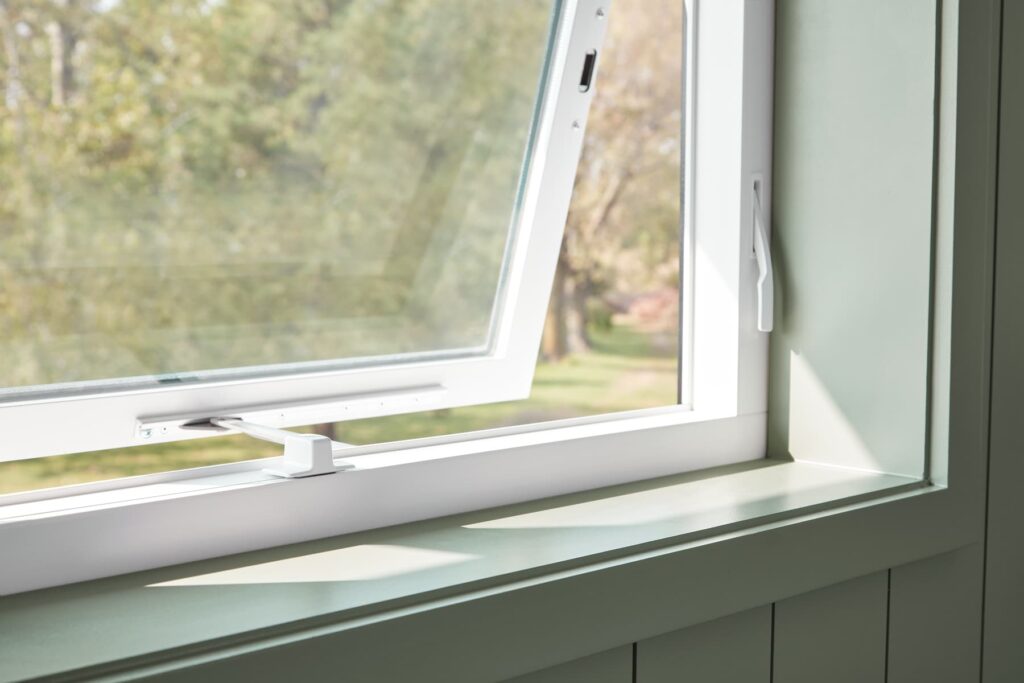
What is the Difference Between an Awning Window and a Casement Window?
Some homeowners may struggle with choosing between casement windows and awning windows. Understanding their differences can help you make a better choice.
| Feature | Awning Window | Casement Window |
|---|---|---|
| Opening Mechanism | Hinged at the top, opens outward at an angle | Hinged on the side, swings outward like a door |
| Ventilation | Provides light airflow and privacy, great for smaller spaces | Allows maximum airflow, ideal for larger spaces |
| Weather Protection | Excellent rain protection due to angled opening | Less effective in rain protection compared to awning windows |
| Security | More secure with limited opening | Good security but wider opening compared to awning windows |
| Privacy | Can be installed higher on the wall for added privacy | Typically installed lower, providing less privacy |
| Energy Efficiency | Provides good insulation when closed | Offers good insulation but may have larger gaps when open |
| Maintenance | Can be harder to clean, especially on higher floors | Easier to clean, as they open fully for access |
| Aesthetic | Compact, sleek design, often used in smaller spaces | Larger openings, ideal for wider views and bigger rooms |
What Are the Pros and Cons of an Awning Window?
Like any window type, awning windows come with their own set of advantages and disadvantages. Let’s break them down to help you decide if they’re the right fit for your home.
Pros of Awning Windows
Excellent Ventilation
The outward-opening design of awning windows allows for great airflow, especially in areas where ventilation is important, like kitchens and bathrooms.
Weather Protection
Thanks to the angle at which they open, awning windows can be left open during light rain without letting water enter the home. This makes them ideal for climates where it frequently rains but you still want to enjoy fresh air.
Privacy
These windows can be installed higher on the wall, offering increased privacy without sacrificing natural light. They’re perfect for spaces like bathrooms or bedrooms, where you need ventilation but don’t want passersby looking in.
Energy Efficiency
The snug seal that awning windows create when closed provides good insulation, which can help reduce heating and cooling costs.
Security
The design makes it harder for intruders to break in. Since the window opens outward and only slightly, it’s more difficult to manipulate from the outside compared to traditional windows.
Cons of Awning Windows
Limited Opening
While the design is great for ventilation, awning windows don’t open as wide as other window types, which can be a disadvantage if you need maximum airflow in larger spaces.
Cleaning Challenges
Because awning windows open outward, they can be harder to clean from the inside, especially on upper floors or hard-to-reach areas. This can require more effort or the use of cleaning tools like window cleaning poles.
Space Constraints
The outward swing of the window can be problematic in areas where space is limited. For example, if there’s furniture or plants outside the window, it may be difficult to fully open the window without obstruction.
Cost
Depending on the materials and installation requirements, awning windows can be more expensive than traditional windows. The installation of these windows, especially in hard-to-reach areas, can also add to the overall cost.
Not Ideal for Large Spaces
While great for smaller areas, awning windows aren’t usually the best choice for large spaces like living rooms or kitchens where you may want larger openings for both ventilation and views.
How Much Does an Awning Window Cost?
The price of an awning window can vary depending on factors like size, material, and whether you’re opting for professional installation. Here’s a more natural breakdown:
For a standard awning window, you can expect to pay around $300 to $700. Keep in mind, the cost can rise based on the material and size.
- Material: For example, vinyl frames are generally cheaper, while aluminum awning windows tend to be more expensive.
- Installation: Professional installation typically adds $100 to $300 per window.
- Custom Features: If you choose custom sizes or energy-efficient glass, costs can increase to $700 to $1,500 or more.
Here’s an example table showing the adverage cost of an aluminum awning window:
| Window Size | Price Range (USD) |
|---|---|
| Small (2'x2') | $400 – $600 |
| Medium (3'x3') | $500 – $750 |
| Large (4'x4') | $600 – $900 |
| Extra Large (5'x5') | $800 – $1,200 |
| Custom (Any size) | $900 – $1,500+ |
Where Do Awning Windows Work Best?
Awning windows are versatile and perform well in various spaces where privacy, ventilation, and protection from the elements are essential. Here are some of the best places for installing them:
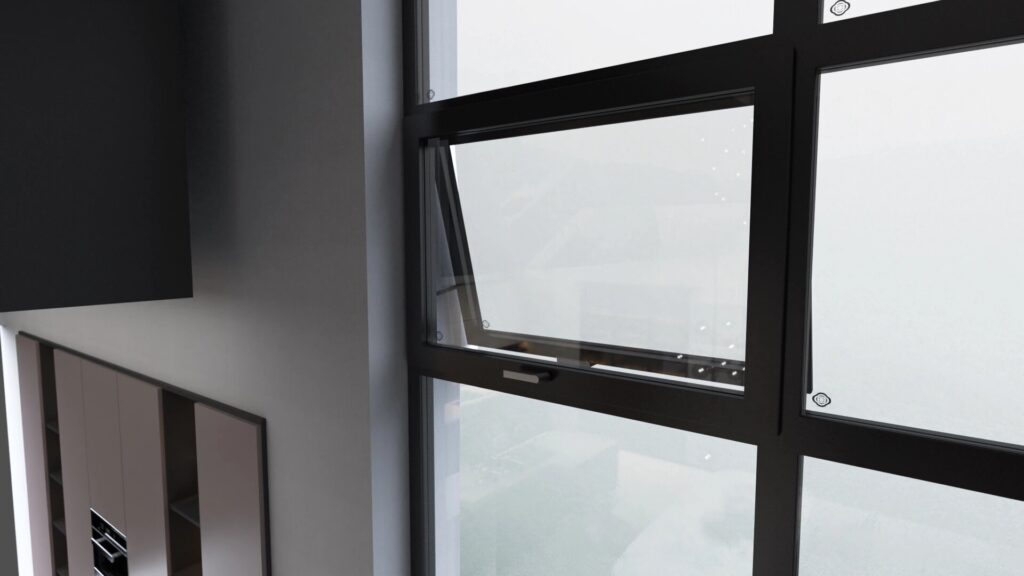
Kitchens
These awning windows are a great choice for kitchen spaces, especially above countertops. They allow fresh air to flow in while keeping rain out, which is especially useful when cooking or washing dishes. The design also helps to maintain privacy if the window is placed higher on the wall.
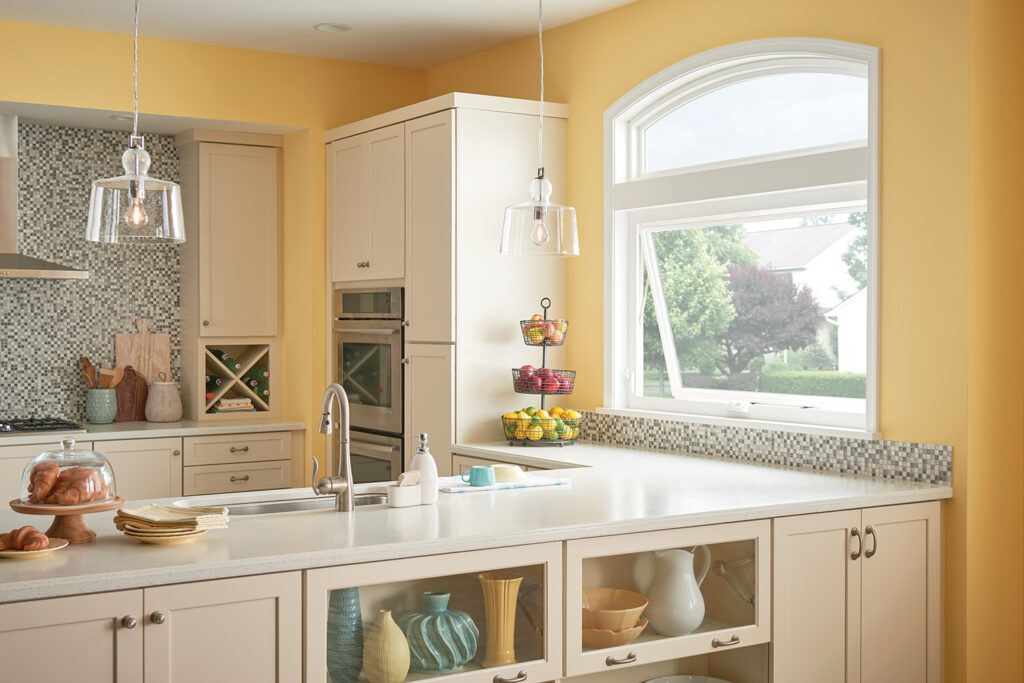
Basements
Basements often lack natural airflow, making awning windows an excellent option. They provide good ventilation and are ideal for small openings, like in basement windows, without risking water entering the space. Their ability to open outward also means they’re great for emergency egress windows, offering an escape route when needed.
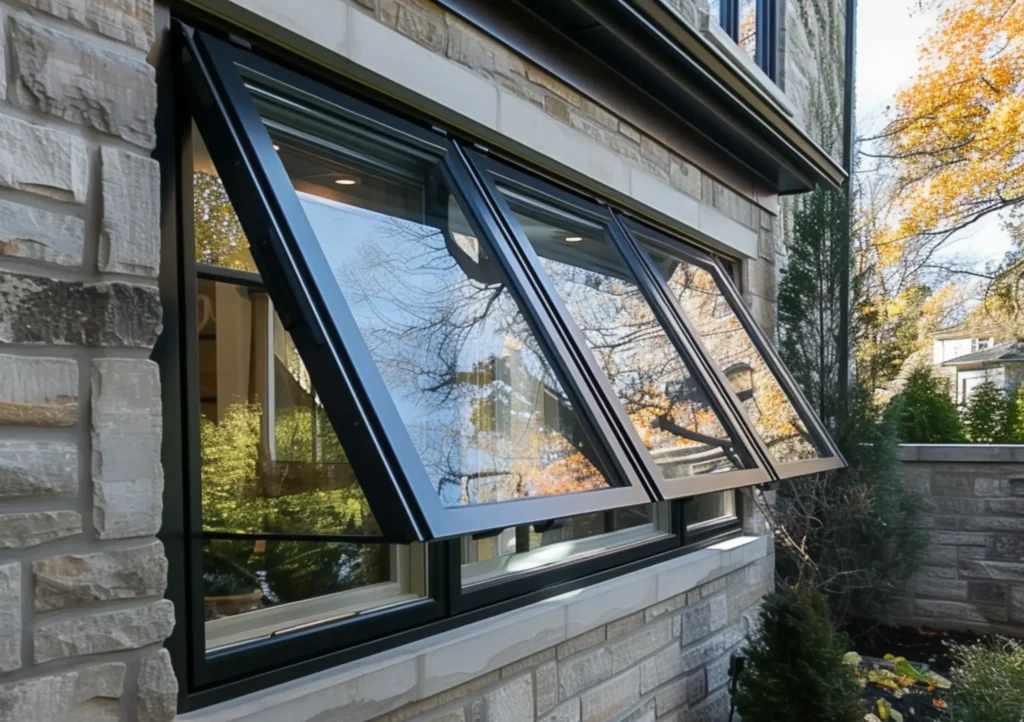
Bathrooms
Awning windows are often installed higher on the wall, which allows for ventilation without sacrificing privacy. The ability to open them even during light rain makes them ideal for bathrooms, where moisture and humidity levels are often higher.
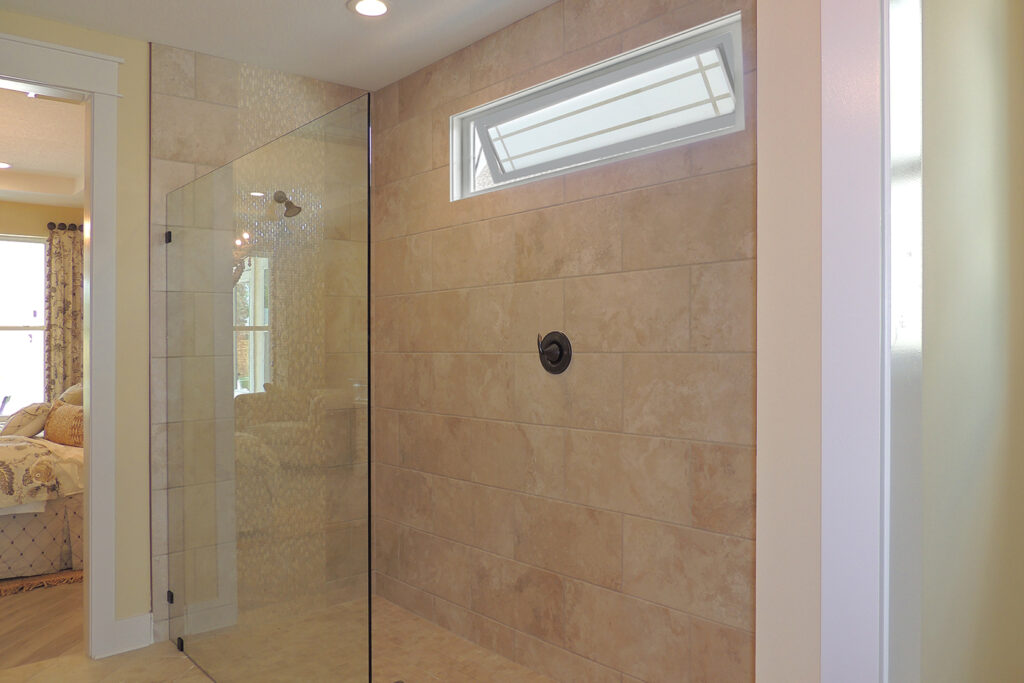
Bedrooms
For ground-floor bedrooms, awning windows offer a secure, private way to let in fresh air. Since they open outward at an angle, they’re less likely to be tampered with, providing an added layer of security. They also keep the room well-ventilated, making it perfect for a good night’s sleep.
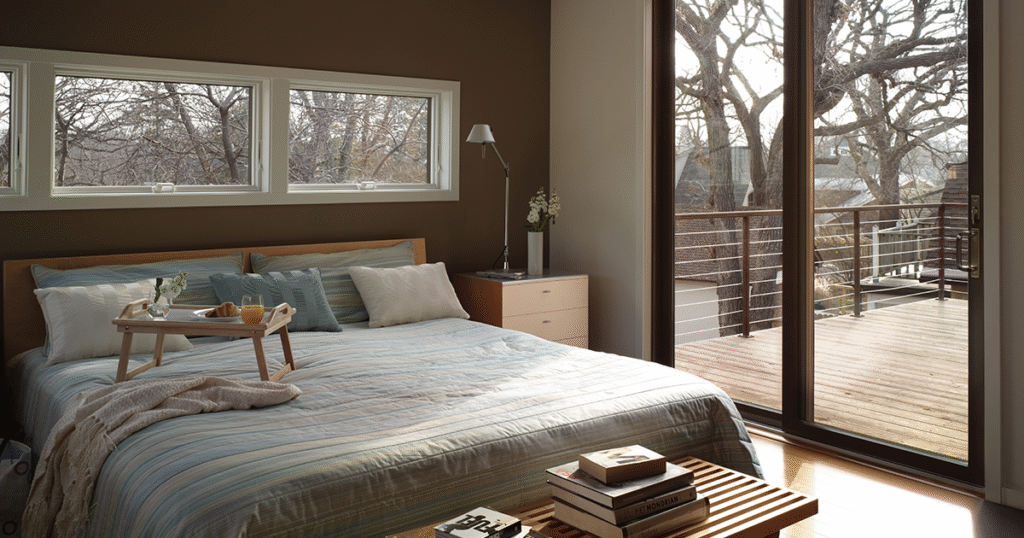
Are Awning Windows Secure?
Yes, awning windows are generally considered secure. Their unique design provides a few key security advantages:
Limited Opening
Since awning windows open outward from the bottom at a small angle, they don’t open wide enough for easy access from the outside, making it harder for intruders to reach inside.
Top-Hinge Design
The fact that these windows are hinged at the top means they are more difficult to pry open compared to other types, such as sliding or casement windows. The outward-opening motion adds an additional layer of security.
Tough Materials
Many awning windows are made from durable materials such as aluminum or vinyl, which are harder to break through compared to traditional wood-framed windows.
Locking Mechanism
Like most windows, awning windows come with locking mechanisms that can further secure the window when closed. High-quality locks and reinforced frames enhance their overall security.
How Big Can an Awning Window Be?
Awning windows’ standard size typically range from 2 feet to 5 feet in width and 2 feet to 4 feet in height. However, custom window sizes can go beyond these dimensions, depending on your specific needs. Keep in mind, larger windows may require additional structural support and could be more expensive.
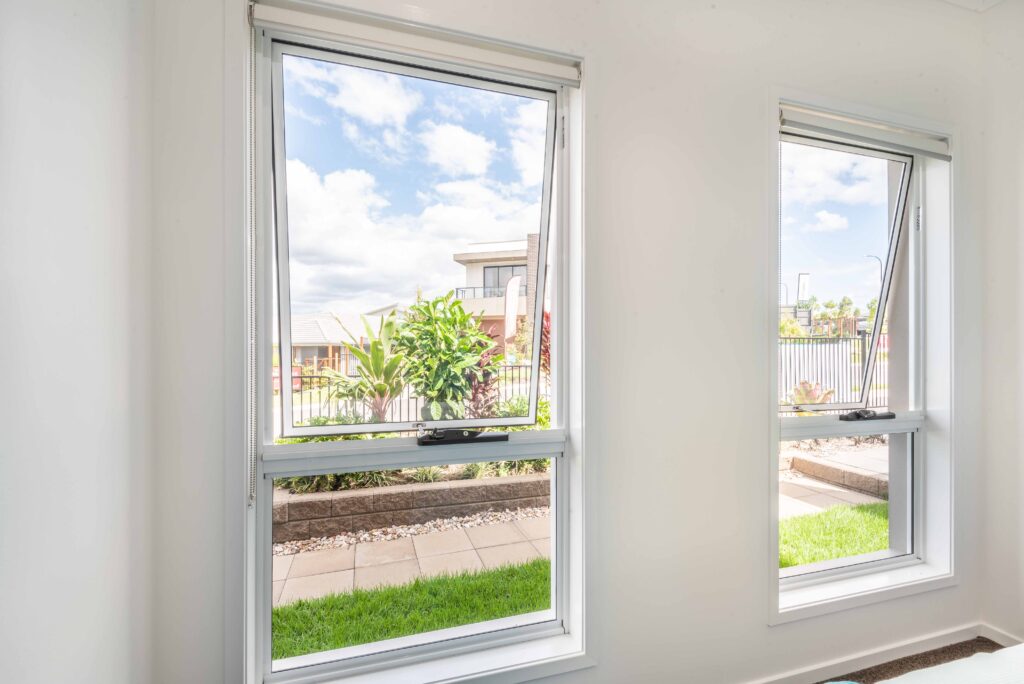
Are Awning Windows Worth It?
If you’re wondering whether awning windows are worth the investment, the short answer is yes. They offer a blend of style, function, and practicality that can make a real difference in your home. Whether you’re after better ventilation, rain protection, or just a unique look, awning windows can meet a variety of needs.
They provide great airflow while keeping the elements at bay, making them perfect for areas where you want fresh air without worrying about rain. Plus, their design offers more privacy than other windows, and they’re generally more secure with their limited opening. So, if you value both functionality and aesthetic appeal, awning windows are definitely worth considering!
How to Clean Awning Windows?
Cleaning awning windows is straightforward with the right approach. First, open the window to access the glass and use a soft brush or cloth to dust off the frame and sills. Then, clean the glass with a mild dish soap and water solution, or a glass cleaner. Rinse with clean water and dry the window with a squeegee or microfiber cloth to avoid streaks.
If your awning windows are high up, make sure to use a ladder or extension pole for safety. Regular cleaning and lubrication of the hinges will help maintain smooth operation and keep your windows looking great for years.
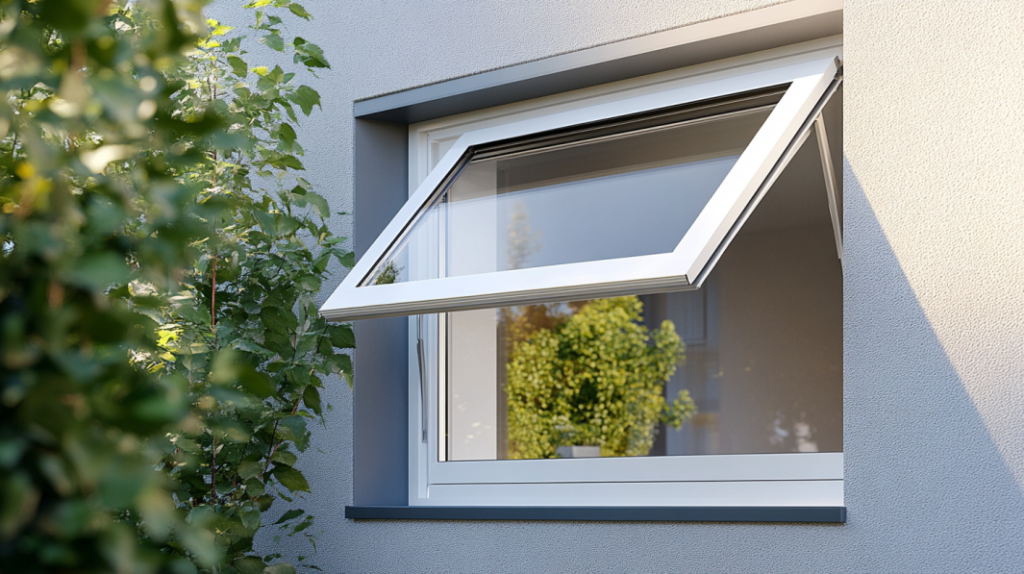
Conclusion
If you’re considering awning windows for your home, PA Home provides high-quality, customizable options to suit your specific needs. With expert craftsmanship and a focus on durability, PA Home ensures your windows are not only functional but also a beautiful addition to your home.
Contact us today to explore how we can help you upgrade your space with the best in window solutions.
FAQs about Awning Windows
Awning windows offer excellent ventilation, rain protection, and privacy. Their unique design allows fresh air to flow in while keeping rain out, making them ideal for kitchens, bathrooms, and basements.
Yes, awning windows are versatile and can be installed in various rooms such as kitchens, bathrooms, bedrooms, and basements. They work best in smaller spaces or areas where privacy and weather protection are important.
Yes, awning windows are energy-efficient, especially when paired with double-glazed or Low-E glass. The tight seal they form when closed helps to maintain indoor temperature, reducing heating and cooling costs.
Awning windows can last anywhere from 20 to 30 years, depending on the material and maintenance. Proper care, such as cleaning and checking seals, can help extend their lifespan.
Yes, awning windows come with locking mechanisms that ensure they stay securely closed. These locks are typically located at the center or bottom of the window, providing peace of mind when the window is closed.
Most awning windows can be fitted with screens, either built-in or as an add-on. This allows you to keep insects out while still enjoying the fresh air that the window provides.
The purpose of an awning window is to provide ventilation, privacy, and protection from the elements. Its top-hinged design allows it to open outward at an angle, offering fresh air while preventing rain from entering. This makes awning windows ideal for spaces like bathrooms, kitchens, and basements, where ventilation and weather protection are important. They also provide privacy, as they can be installed higher on walls, letting light in without compromising your space’s security.


